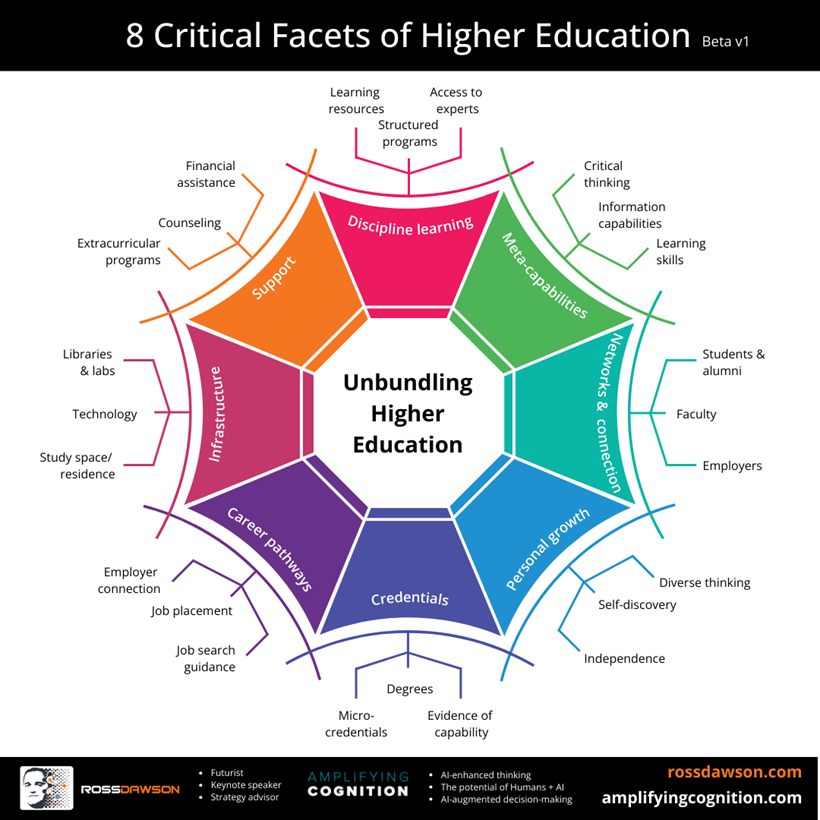The Future of Higher Education: Unbundling and rebundling
This week I gave the keynote for the leadership strategy session of a U.S. tertiary institution with over 120,000 students, on re-envisaging the future of higher education.
As part of my session I shared this framework on unbundling and rebundling higher education. I explain and expand below the image.

Higher education can now be unbundled into an array of needs and offers:
In today’s dynamic, technology-enabled world many of these facets can be provided or supported independently, breaking apart the traditional bundle that has been higher education.
However it still makes sense for most or all of these services to be provided by a single institution in an integrated way. This will best address the holistic needs of the individual, not just of learning but of growing as a person and discovering their path through work, life, and society.
Leaders need to imagine a blank slate of what they could do in addressing the needs of students, considered as whole people, not just learners. Which elements make sense for the institution to provide? How will they fit together and feed off each other in creating a whole that is far more than the sum of the parts? What might make sense to be provided by partners?
Designing a distinctive, unique offer has to be central to this process. There will be intense challenges for most HE institutions beyond the top 300 or so universities in the world (and for those too).
Education is perhaps the single most important driver of a better future for humanity. Higher education must reinvent itself.
Image: Midjourney



